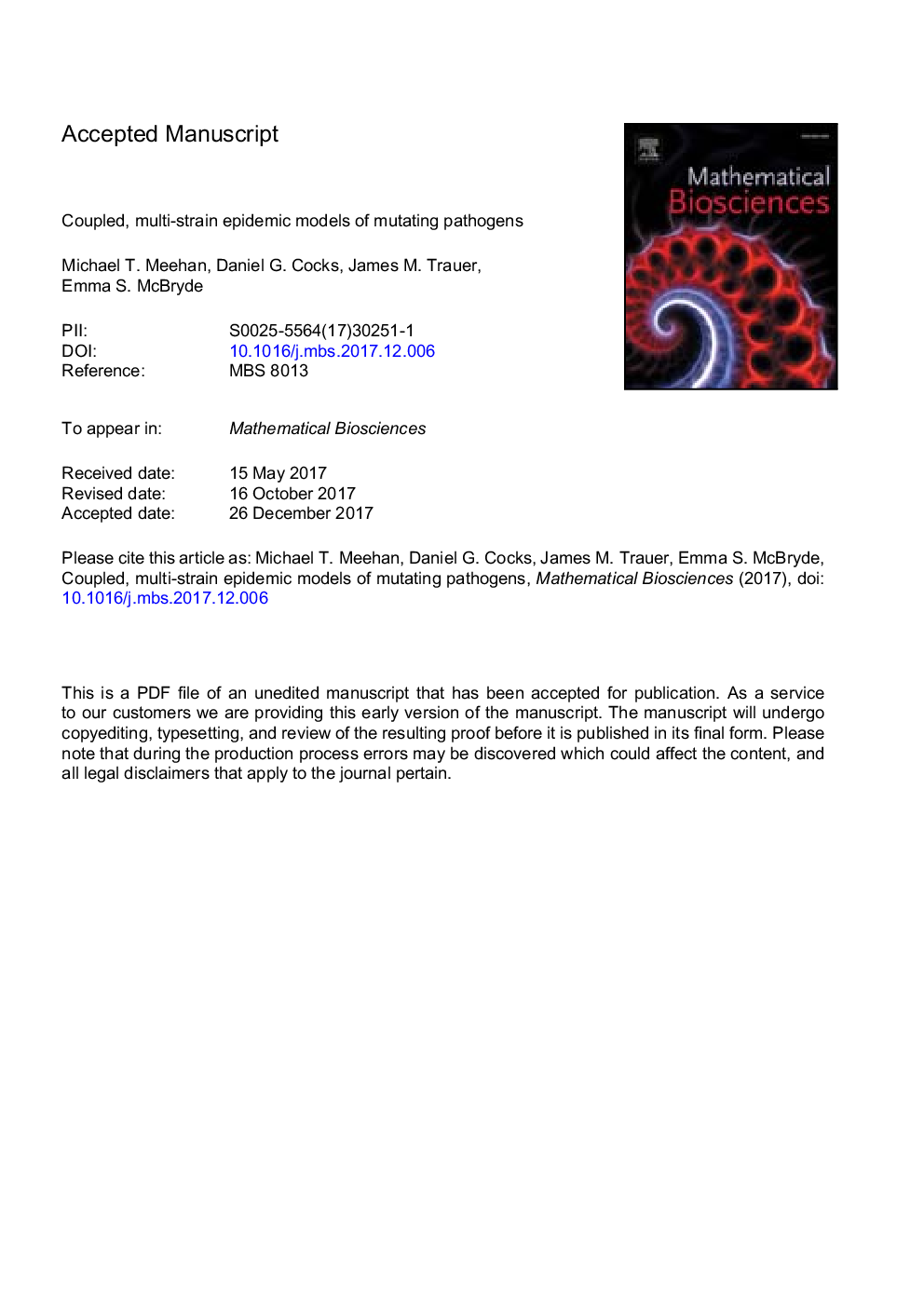| Article ID | Journal | Published Year | Pages | File Type |
|---|---|---|---|---|
| 8877083 | Mathematical Biosciences | 2018 | 37 Pages |
Abstract
We introduce and analyze coupled, multi-strain epidemic models designed to simulate the emergence and dissemination of mutant (e.g. drug-resistant) pathogen strains. In particular, we investigate the mathematical and biological properties of a general class of multi-strain epidemic models in which the infectious compartments of each strain are coupled together in a general manner. We derive explicit expressions for the basic reproduction number of each strain and highlight their importance in regulating the system dynamics (e.g. the potential for an epidemic outbreak) and the existence of nonnegative endemic solutions. Importantly, we find that the basic reproduction number of each strain is independent of the mutation rates between the strains - even under quite general assumptions for the form of the infectious compartment coupling. Moreover, we verify that the coupling term promotes strain coexistence (as an extension of the competitive exclusion principle) and demonstrate that the strain with the greatest reproductive capacity is not necessarily the most prevalent. Finally, we briefly discuss the implications of our results for public health policy and planning.
Related Topics
Life Sciences
Agricultural and Biological Sciences
Agricultural and Biological Sciences (General)
Authors
Michael T. Meehan, Daniel G. Cocks, James M. Trauer, Emma S. McBryde,
